Muddy Waters, John Lee Hooker, Willie Dixon, Son House, Howlin’ Wolf and Elmore James were some of the most influential musicians the world has ever seen. Along with many other bluesmen from the Mississippi Delta country, their music formed the foundation for what became rock ‘n roll, the American music that took over the world.
Preeminent bluesman Robert Johnson was dubbed “King of the Delta Blues.” Johnson’s early recordings influenced legions of musicians, both pure bluesmen and rock ‘n rollers who followed him. He is the stuff of legend, allegedly selling his soul to the devil in exchange for blues prowess. The story is he made his deal with the devil at the crossroads of Hwys. 61 and 49 south of Clarksdale. Johnson’s song “Cross Road Blues” (which doesn’t address any satanic deal-making) has been covered by over 30 artists. The most famous version is Eric Clapton’s arrangement “Crossroads” performed by Cream.
So what made the Delta region (not to be confused with the Mississippi River delta found where the river meets the Gulf) the cradle of blues? The region covers (according to the Wiki) north west Mississippi, along the river from Vicksburg (Willie Dixon’s birthplace) in the south to Memphis in the north, and east to the Yazoo River. It’s the ancient flood plain of the Mississippi River and seems even flatter than the swampy ground surrounding New Orleans, if that could be possible. Thousands of years of the river’s meandering and levee jumping have tortured, scoured and scarred as well as flattened the land. Louisiana and Arkansas have their own Delta regions encompassed by the alluvial flood plain on the west side of the river with similar agricultural and cultural background notes (musicians Jerry Lee Lewis and Conway Twitty from the Louisiana Delta; Johnny Cash the Arkansas Delta).
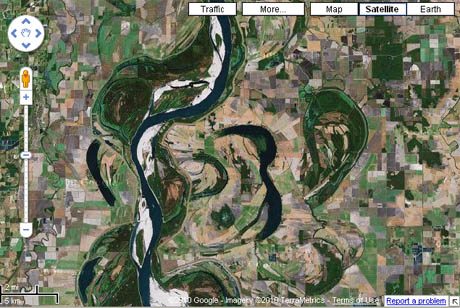
Satellite view of a portion of the Delta country illustrates the tortured scarring inflicted by the river over millennia.
Cotton was king here. Many of the blues artists came from sharecropper families or worked at one time or another in the fields. It was oppressive work performed by poor people who weren’t treated much better than the slaves they descended from. The Delta country was the scene of much bloodshed and violence during the civil rights era, and it’s no wonder that following WWII returning GIs fled the area in search of better living in cities like Chicago, where blues recordings by Chess Records made the likes of Muddy Waters famous and paved the way for Chuck Berry and the rock ‘n rollers. The movie Cadillac Records provides a well-produced but fictionalized account of the Chess Records story.
Hwy. 61 (Airline Hwy. in the New Orleans area) starts in Louisiana and ends in Minnesota (where Bob Dylan is from, his album Highway 61 Revisited is a classic), following the river most of the way. It cuts right through the Delta and is the route I take to get to Arkansas every Thanksgiving.
Traveling through the Delta from Vicksburg to Greenville (where there is a bridge that crosses into Arkansas). I jump off Hwy. 61 on to Miss. Hwy. 1 where 61 meets the town of Rolling Fork, home town of Muddy Waters himself (links to DeltaBlues.net, a great resource on the Delta’s byways and juke joints).
It’s always been the week of Thanksgiving that I take my trip through the Delta, and the weather is usually cool and clear. The fields have been harvested and tufts of leftover cotton gather up along side of the road like mini-snowdrifts. Looking at all the fields and the run-down shacks and shanties, silos and cotton gins alongside the road and I can tell I wouldn’t want to be working outside in the summer around here.
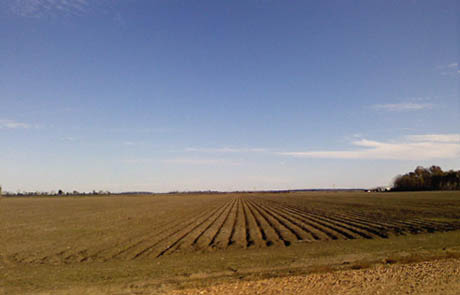
The Delta fields stretch on forever.
It’s not without inherent beauty, though. I’ve always been struck by it, the vast emptiness of the fields, the rusted-roof shacks and the occasional splendid plantation home. I’m not the only one; scores of photographers and artists have tried to capture the Delta’s essence. Mississippi public radio was playing an interview with artist Rolland Golden while I was driving through the Delta. He talked about the Delta scenes he’s painted for decades and remembered the days when, as a boy, his family lived in Grenada, Miss. and his father would take him on drives through the Delta country. Some of Rolland’s Delta work can be seen here, here, here and here. His latest exhibit of Mississippi River paintings is on display in Jackson now.
I love the Algiers ferry pictures here and here, he said they were painted recently from photos he took in the ’60s, when, as an artist raising his young family in the French Quarter, he and his wife and kids would occasionally ride the free ferry back and forth on weekend outings. The free ferry ride is still something people enjoy today; being on the river amid the ships travelling to and from foreign ports, enjoying the New Orleans skyline that, in Rolland’s paintings, is bare but for the cathedral and Hotel Monteleone as his photos pre-dated the CBD building boom of the 70s.
I always forget to pack a tripod and camera when traveling through the Delta country, but listening to Rolland on that beautiful afternoon inspired me to at least get some shots with my phone.
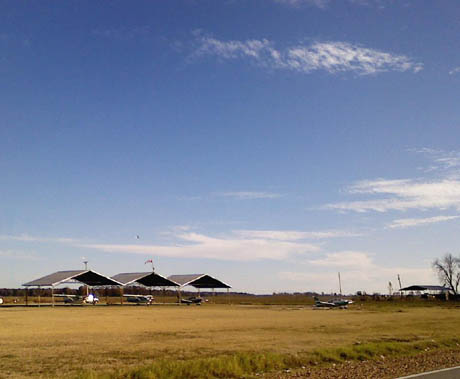
Crop dusters in their hangers along Highway 1.
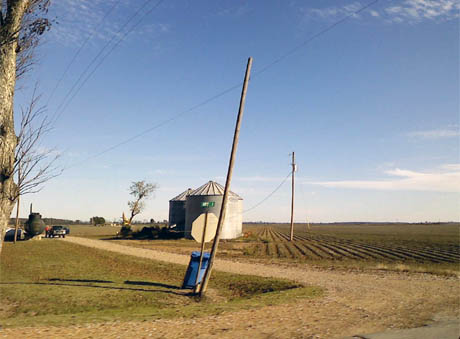
Grain silos in the Delta country along Hwy. 1.
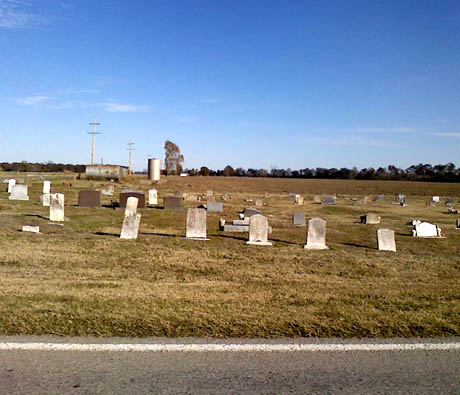
Elmwood Cemetery outside of Rolling Fork.
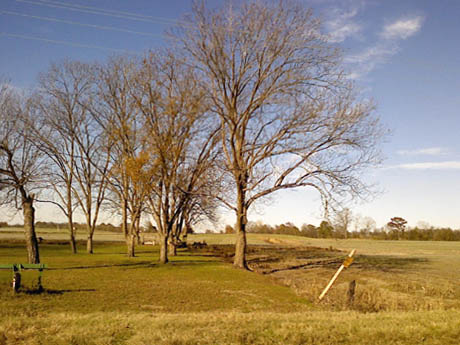
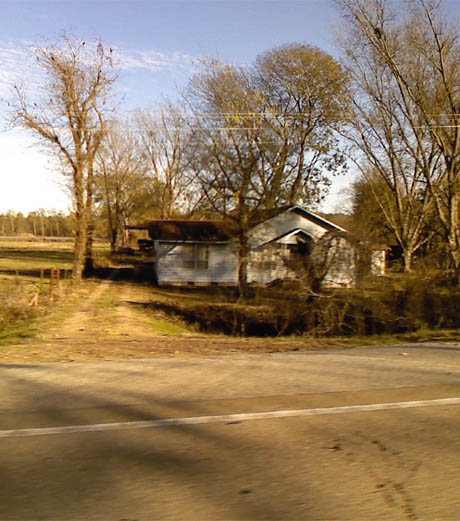

love the cemetery shot!
Nice entry, good pix. I love the work of Rolland Golden (have a print by him, in fact), and his style does indeed capture the stark beauty of the Mississippi Delta.
I so much enjoy the pictures. My Grandparents and Uncles moved upo around Cleveland many moons ago to farm from Lake Providence.
I agree with you about that beauty of that drive. I even like that drive at night where I roll down the windows and smell the air. There is distinctive feel to it that is unlike other areas of the South
[…] I mentioned artist Rolland Golden’s work in a previous post. Fourteen of the 32 or so works he painted in the wake of Hurricane Katrina and exhibited at NOMA […]